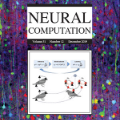In this paper, we develop four spiking neural network (SNN) models for two static American Sign Language (ASL) hand gesture classification tasks, i.e., the ASL Alphabet and ASL Digits. The SNN models are deployed on Intel's neuromorphic platform, Loihi, and then compared against equivalent deep neural network (DNN) models deployed on an edge computing device, the Intel Neural Compute Stick 2 (NCS2). We perform a comprehensive comparison between the two systems in terms of accuracy, latency, power consumption, and energy. The best DNN model achieves an accuracy of 99.6% on the ASL Alphabet dataset, whereas the best performing SNN model has an accuracy of 99.44%. For the ASL-Digits dataset, the best SNN model outperforms all of its DNN counterparts with 99.52% accuracy. Moreover, our obtained experimental results show that the Loihi neuromorphic hardware implementations achieve up to 14.67x and 4.09x reduction in power consumption and energy, respectively, when compared to NCS2.
翻译:在本文中,我们为两个静态的美国手语手势分类任务开发了四个神经网络模型,即ASL字母字母和ASL数字。 SNN模型部署在Intel的神经形态平台Loihi上,然后与在边缘计算设备即Intel Neal Comput Stick 2 (NCS2)上部署的等效深神经网络模型进行比较。我们从精确度、延缓度、电耗和能量方面对两个系统进行全面比较。最好的DNN模型在ASL Alphet数据集上实现了99.6%的精确度,而最佳的SNNN模型的精确度为99.44%。对于ASL-Digits数据集来说,最好的SNN模型以99.52%的精确度超越了所有DNNN的对应器。此外,我们获得的实验结果表明,与NCS2相比,Loihi神经形态硬件的实施分别达到14.67x和4.09x的电力消耗和能源下降率。



